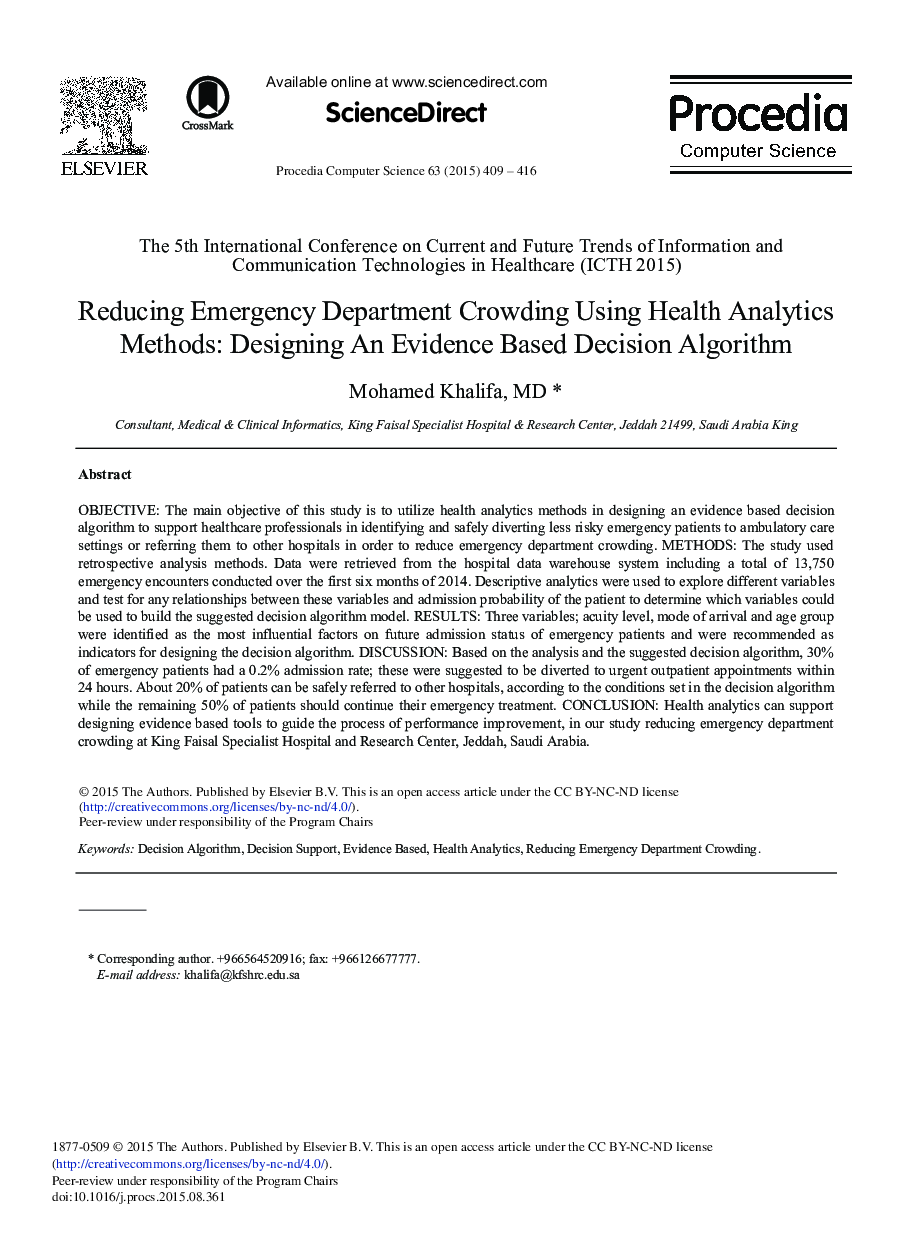| Article ID | Journal | Published Year | Pages | File Type |
|---|---|---|---|---|
| 484594 | Procedia Computer Science | 2015 | 8 Pages |
OBJECTIVE: The main objective of this study is to utilize health analytics methods in designing an evidence based decision algorithm to support healthcare professionals in identifying and safely diverting less risky emergency patients to ambulatory care settings or referring them to other hospitals in order to reduce emergency department crowding. METHODS: The study used retrospective analysis methods. Data were retrieved from the hospital data warehouse system including a total of 13,750 emergency encounters conducted over the first six months of 2014. Descriptive analytics were used to explore different variables and test for any relationships between these variables and admission probability of the patient to determine which variables could be used to build the suggested decision algorithm model. RESULTS: Three variables; acuity level, mode of arrival and age group were identified as the most influential factors on future admission status of emergency patients and were recommended as indicators for designing the decision algorithm. DISCUSSION: Based on the analysis and the suggested decision algorithm, 30% of emergency patients had a 0.2% admission rate; these were suggested to be diverted to urgent outpatient appointments within 24 hours. About 20% of patients can be safely referred to other hospitals, according to the conditions set in the decision algorithm while the remaining 50% of patients should continue their emergency treatment. CONCLUSION: Health analytics can support designing evidence based tools to guide the process of performance improvement, in our study reducing emergency department crowding at King Faisal Specialist Hospital and Research Center, Jeddah, Saudi Arabia.
